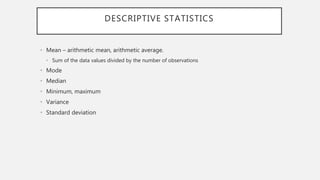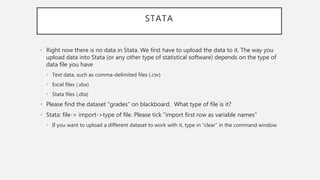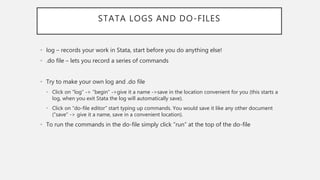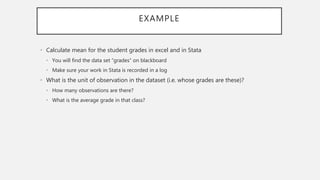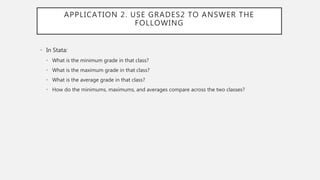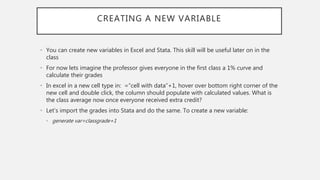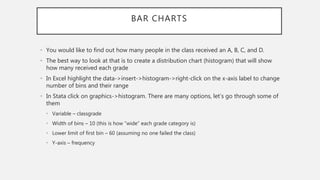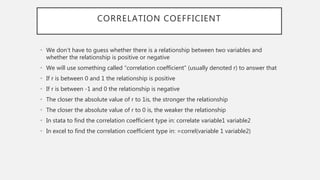This document introduces descriptive statistics such as mean, median, mode, variance and standard deviation. It demonstrates how to calculate these statistics in Excel and Stata using sample student grade and unemployment rate datasets. Key charts for presenting data like histograms, bar charts and line charts are also illustrated for both programs. The concept of correlation is discussed and how to calculate the correlation coefficient to understand relationships between variables.

